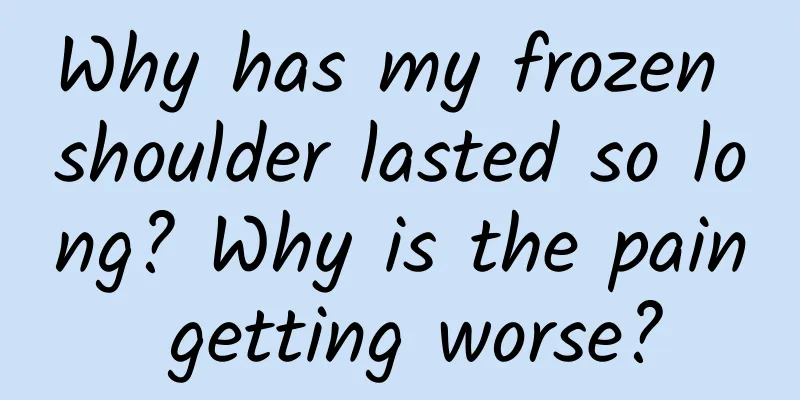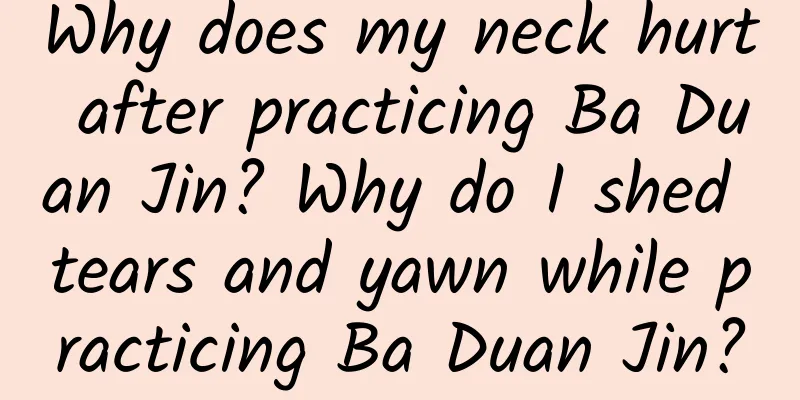Why has my frozen shoulder lasted so long? Why is the pain getting worse?

|
This is the 3550th article of Da Yi Xiao Hu Aunt Zheng is 56 years old and has been retired for several years. In the first half of this year, she began to experience inexplicable pain in her right shoulder joint and could not lift it. Neighbors said she had periarthritis of the shoulder and asked her to pull the fitness rings by herself, but the more she pulled, the heavier it became. In the past two months, Aunt Zheng found that her shoulders were becoming weaker and more painful, and she woke up in pain in the middle of the night every day. Under the arrangement of the community family doctor, the patient was referred to the shoulder injury specialist of the Orthopedic Center of Yueyang Hospital. After physical examination, Dr. Li found that the patient's shoulder joint activity was good, but there was obvious local tenderness in the right shoulder. The Neer impact test (+) and Jobe test (+) of the right shoulder joint were positive, and the shoulder joint activity was 70° abduction, 75° flexion, and 30° extension. Considering the diagnosis of "rotator cuff injury", it is recommended to perform a shoulder joint magnetic resonance imaging to clarify the condition. The patient was also prescribed the traditional Chinese medicine "three-color compress". A week later, Aunt Zheng had an MRI and went to the shoulder injury specialist for a follow-up visit. Doctor Li interpreted her MRI images to her and once again told Aunt Zheng that her disease was not adhesive capsulitis of the shoulder, the so-called "periarthritis of the shoulder", and it would be difficult for her to get better on her own. She should be clearly diagnosed with supraspinatus tendon tear and acromion impingement syndrome. Considering that although Aunt Zheng had achieved certain results with the application of the three-color compress, her rotator cuff injury was severe, her shoulder joint movement was severely impaired, and her chronic pain seriously affected her quality of life, she was recommended to undergo arthroscopic supraspinatus tendon suture and acromion molding minimally invasive surgery. A week later, Aunt Zheng, who had just had surgery two days ago, happily said to Dr. Li who came to check on me: "Thank you, Dr. Li. I have been in pain for more than half a year and I haven't had a good night's sleep for several months. If you hadn't discovered that I didn't have periarthritis of the shoulder, I would still be in pain. I don't know how I would have lived if I hadn't been in pain." Director Li Bo of the Joint Department of the Orthopedic Center of Yueyang Hospital reminds everyone that many middle-aged and elderly patients mistakenly treat rotator cuff injuries as adhesive capsulitis or frozen shoulder, and also "strengthen their exercise", but the more they exercise, the more serious their injury becomes. Rotator cuff injury and adhesive capsulitis are essentially two diseases with completely opposite course of disease. Adhesive capsulitis is a disease with a greater tendency to self-heal. It is mainly caused by inflammatory adhesion of the joint capsule and pain caused by inflammatory congestion and edema. It can be divided into three stages: pain, stiffness, and relief. It can achieve better results through external application of traditional Chinese medicine, acupuncture, massage and drugs. However, rotator cuff injury is pain caused by tendon rupture, and symptoms such as decreased muscle strength and stiff shoulder joint gradually appear, which seriously affect the quality of life of patients. For the treatment of rotator cuff injury, the specific injury site can be clearly determined under magnetic resonance imaging technology, different treatment methods can be adopted according to the degree of injury, and precise treatment can be performed through minimally invasive arthroscopic technology. This requires that patients go to regular professional medical institutions to seek medical treatment and promptly discover the cause of their shoulder pain. It also requires our medical workers to promote medical science to the public to prevent other patients from repeating Aunt Zheng's mistakes! Author: Yueyang Hospital of Integrated Traditional Chinese and Western Medicine, Shanghai University of Traditional Chinese Medicine Department of Orthopedics and Traumatology Center Feng Shengyi Li Xuejia Kong Deliang Li Bo Quyang Road Community Health Service Center, Hongkou District, Shanghai Acupuncture and Traumatology Lu Wenting Photos: Kong Deliang and Lu Wenting Some pictures are taken from the Internet. If there is any infringement, please let us know and they will be deleted. All names and place names are pseudonyms and any similarity is purely coincidental. |
<<: What is Wasabi? Benefits of Wasabi
>>: Kidney patients must know this guide to using antihypertensive drugs
Recommend
Can I still get pregnant after left fallopian tube removal?
Nowadays, infertility is normal for us now, and w...
How to make your breasts bigger
I believe that most girls pursue big breasts, bec...
OLs who sit for a long time should pay attention to the 4 postures that are most likely to harm the female body
Today's women are generally under great work ...
Symptoms of menopausal syndrome in women
There are many types of female diseases. When tre...
Can I put on makeup when I have acne? Can I put on makeup when I have acne?
Makeup is an indispensable part of women's da...
How to check for pelvic inflammatory disease
Pelvic inflammatory disease is very harmful to wo...
How long after the IUD is removed can I have sex overnight?
There are certain precautions for sexual intercou...
Systemic sclerosis: Uncovering the mystery and entering the world of scleroderma
Systemic sclerosis, also known as scleroderma, is...
Is it good for a woman to have thick palms?
Women are the main force in life and the main par...
Is it true that Tang Yan gave birth to twins? When did Tang Yan give birth?
Recently, it was revealed online that Tang Yan ha...
No need for surgery? This technology can "freeze" breast tumors to death!
Breast cancer is the most common cancer affecting...
Can I eat cherries when I have my period?
Generally, cherries are bright red in color when ...
Pork also has health advantages! Eating it right can replenish your nutrition
Many people believe that chicken and beef are hea...
How to reasonably supplement folic acid in clinical practice? Please listen to the advice and suggestions of experts
Folic acid, as a B vitamin, was first extracted f...
What should women do when they sweat while sleeping at night?
Generally, it is easy to sweat during large activ...









